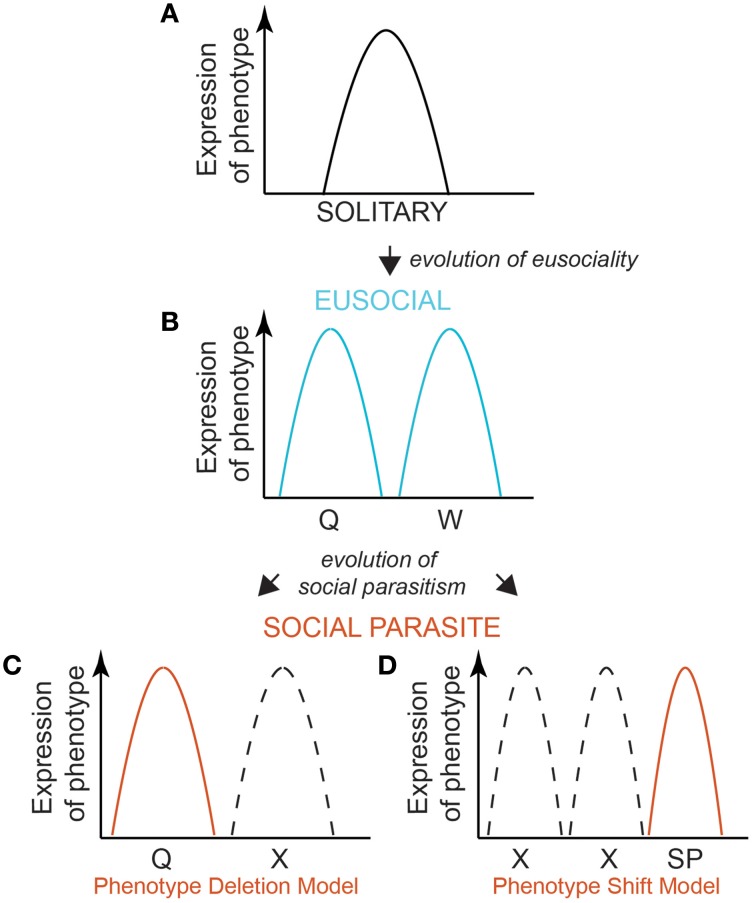Figure 1.
A model for the evolution of a social parasite phenotype from a eusocial ancestor. A model of shared and contrasting reaction norms is a useful way of exploring the possible ways by which social parasite phenotypes may evolve. A bell curve describes the expression of a single phenotype in a solitary species (A). Eusocial insects evolved form a solitary ancestor (A), and produce two phenotypes—reproductive queens and non-reproductive workers (B). Queens and workers occupy a bimodal expression of phenotypic space, expressing distinct mutually exclusive molecular phenotypes (e.g., gene expression profiles). The genome remains plastic and able to produce alternative phenotypes in response to the environment. Social parasites may evolve via canalization, whereby the phenotype is fixed (as a reproductive) irrespective of the environment, and so unlike its eusocial ancestor, phenotypic expression is robust to the environment: social parasites always produce a reproductive and never a worker phenotype. We propose two ways by which this could arise. Since the social parasite resembles so closely the phenotype of their ancestral eusocial queen, one model is that the worker phenotype is functionally “deleted.” This would suggest that the phenotypic reaction norm landscape of the worker caste is not expressed (C, Phenotype Deletion Model). An alternative is that the social parasite is a new, or modified, phenotype, with a reaction norm that is different to both the bimodal (caste) peaks of the eusocial ancestor (D, Phenotype Shift Model). For simplicity, we place this shifted phenotype in a different phenotypic space to the ancestral queen and worker phenotypes, but this curve could lie at any point. Dashed curves depict the ancestral eusocial phenotypes that are no longer expressed by the social parasite. Determining this point may shed light on the mechanisms of social parasite phenotype evolution. The two models are not necessarily mutually exclusive: depending on the time since divergence between the lineages, the two models may represent different ends of a spectrum of phenotypic evolution.

